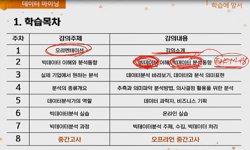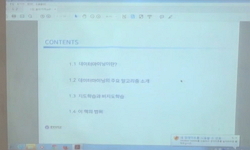우울증은 가장 유병율이 높은 '기분 장애'(mood disorder)의 일종으로, 약 20%의 인구가 일생동안 우울증 증상을 한번쯤 경험한다. 이러한 우울증은 크게 '우울 장애'(major depressive disorder)와 '양극...
http://chineseinput.net/에서 pinyin(병음)방식으로 중국어를 변환할 수 있습니다.
변환된 중국어를 복사하여 사용하시면 됩니다.
- 中文 을 입력하시려면 zhongwen을 입력하시고 space를누르시면됩니다.
- 北京 을 입력하시려면 beijing을 입력하시고 space를 누르시면 됩니다.
뇌파의 의사 결정 트리 분석과 가능성 기반 서포트 벡터 머신 분석을 통한 우울증 환자의 분류 = EEG Classification for depression patients using decision tree and possibilistic support vector machines
한글로보기https://www.riss.kr/link?id=A101694065
-
저자
심우현 ; 이기영 ; 채정호 ; 정재승 ; 이도헌 ; Sim, Woo-Hyeon ; Lee, Gi-Yeong ; Chae, Jeong-Ho ; Jeong, Jae-Seung ; Lee, Do-Heon
- 발행기관
- 학술지명
- 권호사항
-
발행연도
2006
-
작성언어
Korean
- 주제어
-
자료형태
학술저널
-
수록면
134-138(5쪽)
- 제공처
-
0
상세조회 -
0
다운로드
부가정보
국문 초록 (Abstract)
우울증은 가장 유병율이 높은 '기분 장애'(mood disorder)의 일종으로, 약 20%의 인구가 일생동안 우울증 증상을 한번쯤 경험한다. 이러한 우울증은 크게 '우울 장애'(major depressive disorder)와 '양극성 장애'(bipolar disorder)로 구분된다. 환자의 질병 분류에 따라 사용되는 약과 의학적 처방이 다르기 때문에, 우울증 환자의 빠르고 정확한 진단 및 분류는 매우 중요하다. 기존의 다면성 인성검사(MMPI)와 같은 통계적인 방법이 우울증 환자의 진단을 위해 사용돼 왔으나, 장시간의 집중력을 요구하기 때문에 집중력 저하의 특징을 보이는 우울증 환자들에게 적용하는데 어려움이 있다. 이 논문에서는 이러한 문제를 해결하고자, 빠른 측정이 가능하고 측정동안 집중력을 요하지 않는 EEC 데이터의 분석을 통해 우울증 환자의 분류를 시도하였다. EEG 채널 간 정보 흐름에서의 비선형성과 근사 엔트로피(approximate entropy)의 크기를 속성(attribute)으로 사용하여 데이터 마이닝 기법 중 의사 결정 트리(decision tree)와 가능성 기반 서포트 벡터머신(possibilistic support vector machines) 통해 분석을 수행하였다. 30명의 주요 우울장애환자와 24명의 양극성 장애 환자를 통해 위의 분석을 수행한 결과 의사 결정 트리의 경우 85.19% 의 정확도를 가지며 분류해냈고, 가능성 기반 서포트 벡터머신의 경우 77.78%의 정확도를 보여줬다. 본 연구는 가능성 기반 서포트 벡터 머신 분석이 우울증 환자는 진단하고 분류하는데 유용하게 적용될 수 있는 가능성을 제시하고 있다.
다국어 초록 (Multilingual Abstract)
Depression is the most common and widespread mood disorder. About 20% of the population might suffer a major, incapacitating episode of depression during their lifetime. This disorder can be classified into two types: major depressive disorders and bi...
Depression is the most common and widespread mood disorder. About 20% of the population might suffer a major, incapacitating episode of depression during their lifetime. This disorder can be classified into two types: major depressive disorders and bipolar disorder. Since pharmaceutical treatments are different according to types of depression disorders, correct and fast classification is quite critical for depression patients. Yet, classical statistical method, such as minnesota multiphasic personality inventory (MMPI), have some difficulties in applying to depression patients, because the patients suffer from concentration. We used electroencephalogram (EEG) analysis method fer classification of depression. We extracted nonlinearity of information flows between channels and estimated approximate entropy (ApEn) for the EEG at each channel. Using these attributes, we applied two types of data mining classification methods: decision tree and possibilistic support vector machines (PSVM). We found that decision tree showed 85.19% accuracy and PSVM exhibited 77.78% accuracy for classification of depression, 30 patients with major depressive disorder and 24 patients having bipolar disorder.
동일학술지(권/호) 다른 논문
-
- Korean Society for Bioinformatics and Systems Biology
- Han, Dong-Soo
- 2006
-
Local structural alignment and classification of TIM barrel domains
- Korean Society for Bioinformatics and Systems Biology
- Keum, Chang-Won
- 2006
-
Urokinase Inhibitor Design Based on Pharmacophore Model Derived from Diverse Classes of Inhibitors
- Korean Society for Bioinformatics and Systems Biology
- Shui, Liu
- 2006
-
질량스펙트럼의 펩타이드 분자량 오차범위 재해석에 의한 단백질 동정의 성능 향상
- 한국생물정보시스템생물학회
- 권경훈
- 2006




 ScienceON
ScienceON






